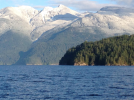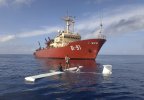Calculatedpilot83
Ejection Handle Pulled
- Joined
- Aug 13, 2023
- Messages
- 10
- Display Name
Display name:
Pilot83
I flying in coastal mountains on the west coast with 172. Where I fly there’s often no desirable location to land the aircraft and ditching will be the only option. I’m wondering when it’s acceptable to take the water ditch close to shore (no beaches, very steep cliffs and 40-100ft trees from 5000ft to the sea)
Basically I’m asking if you would rather fly 50kn into trees but not have to deal with water. Or take the water route. From what I’ve seen. Most water ditches seem to walk away without major injuries,
When water ditching is there any technique, like slipping so one wheel touches first and maybe twist the aircraft rather than both wheels at the same time and flip?
Thanks!
Basically I’m asking if you would rather fly 50kn into trees but not have to deal with water. Or take the water route. From what I’ve seen. Most water ditches seem to walk away without major injuries,
When water ditching is there any technique, like slipping so one wheel touches first and maybe twist the aircraft rather than both wheels at the same time and flip?
Thanks!


